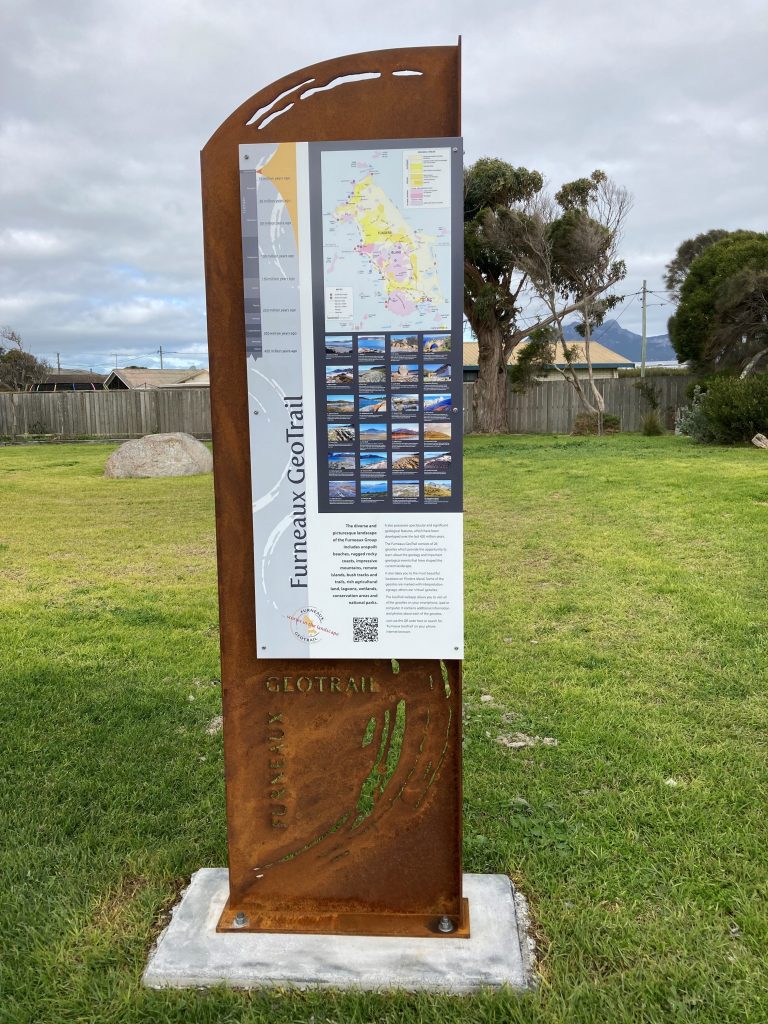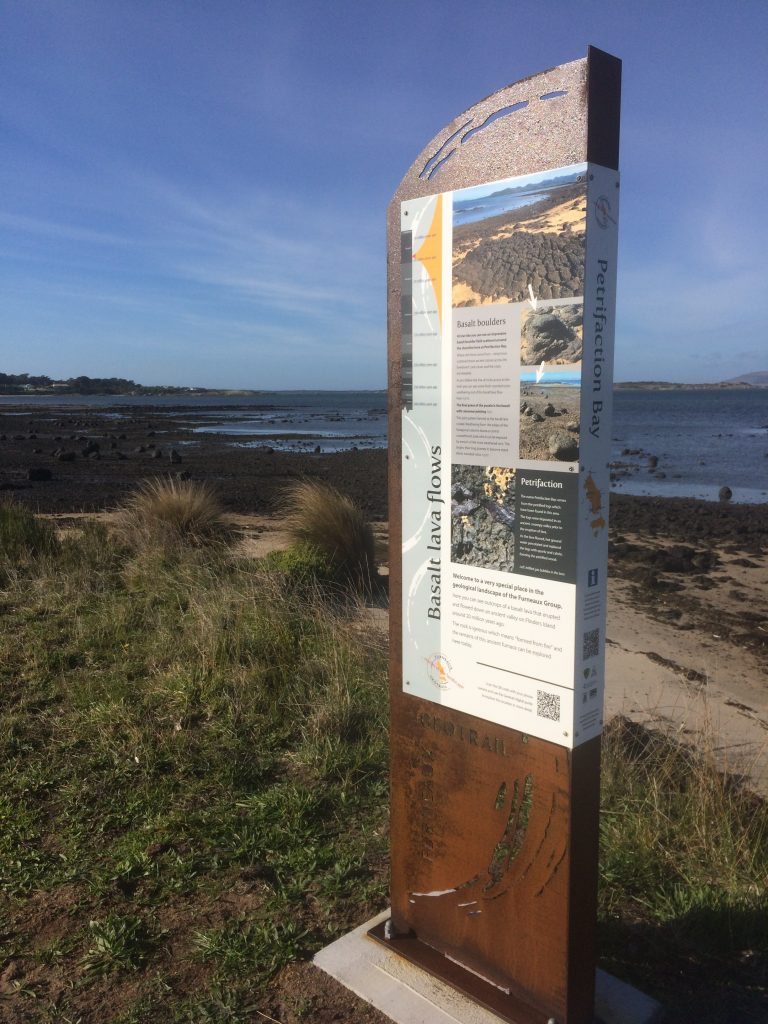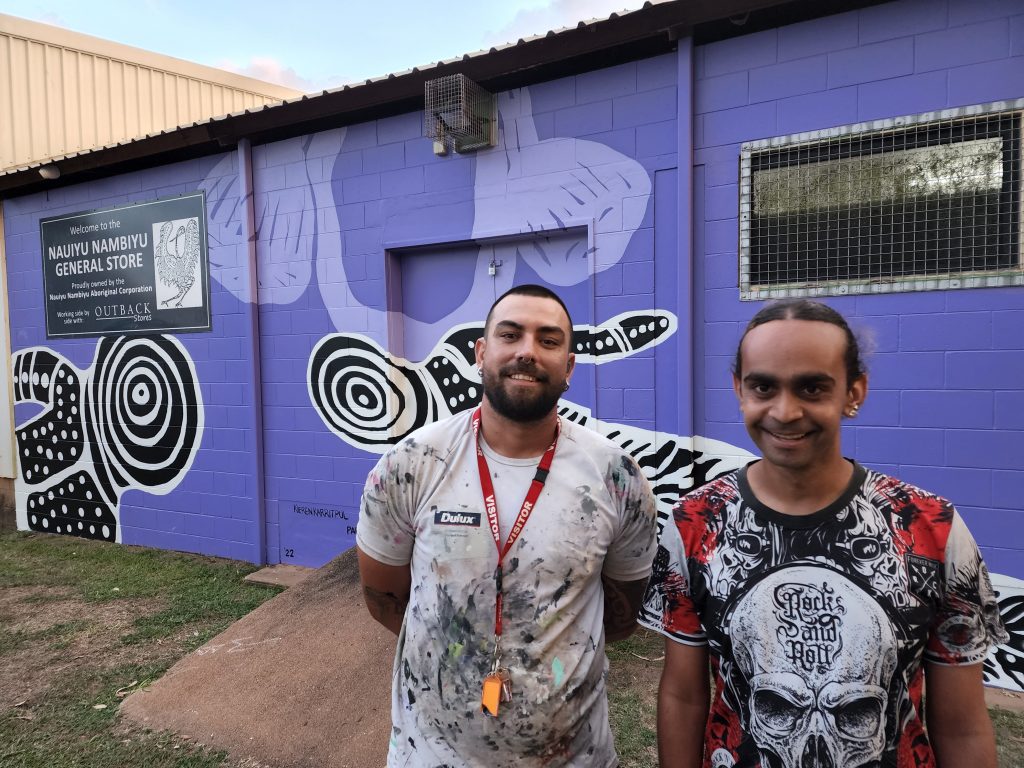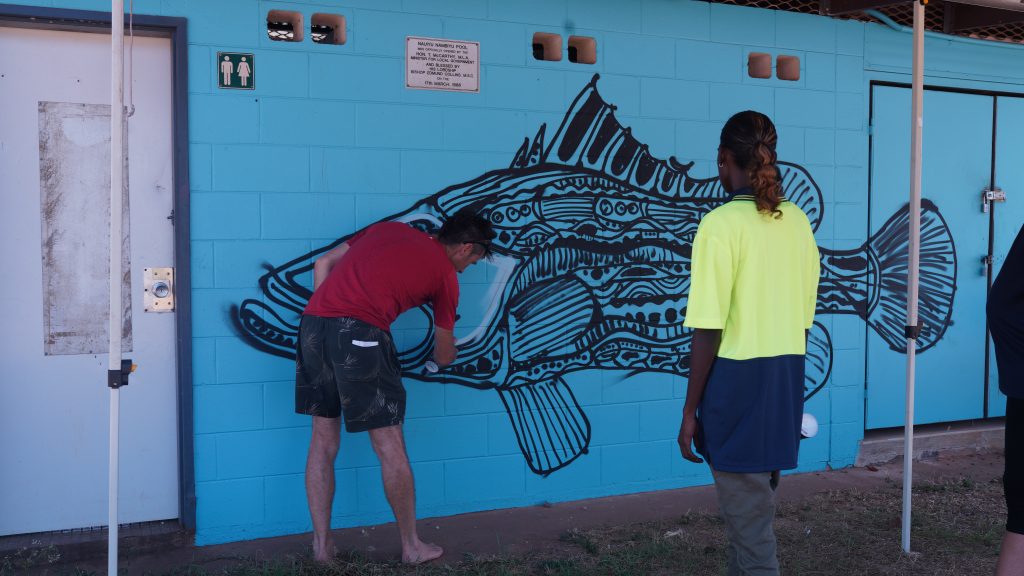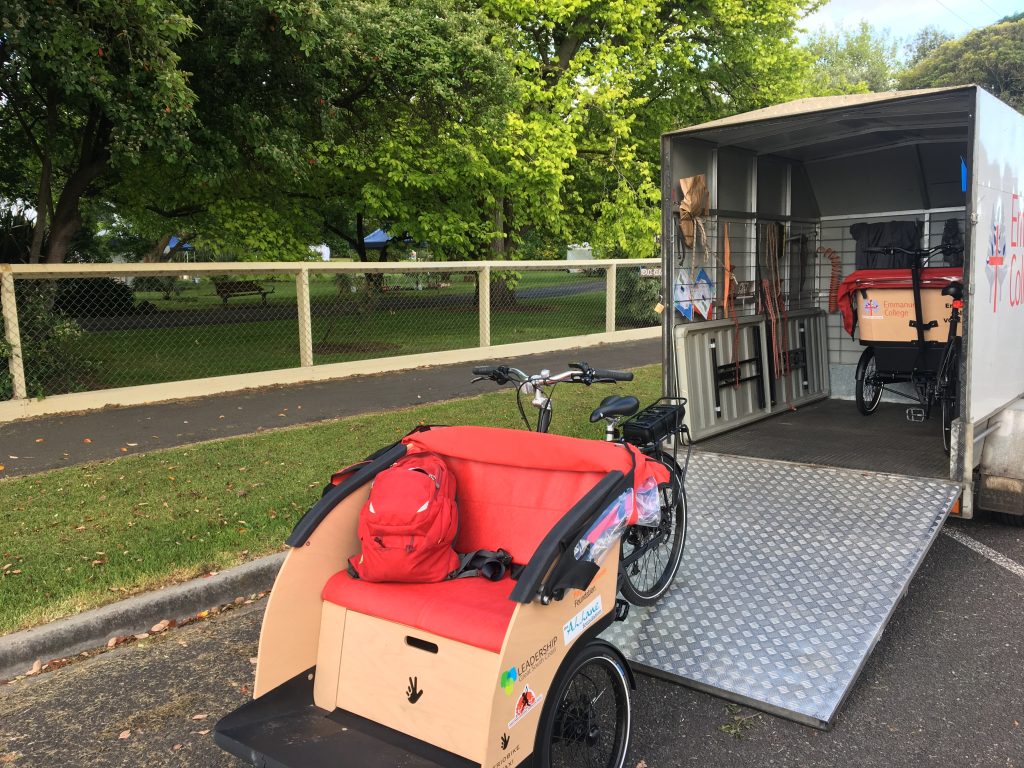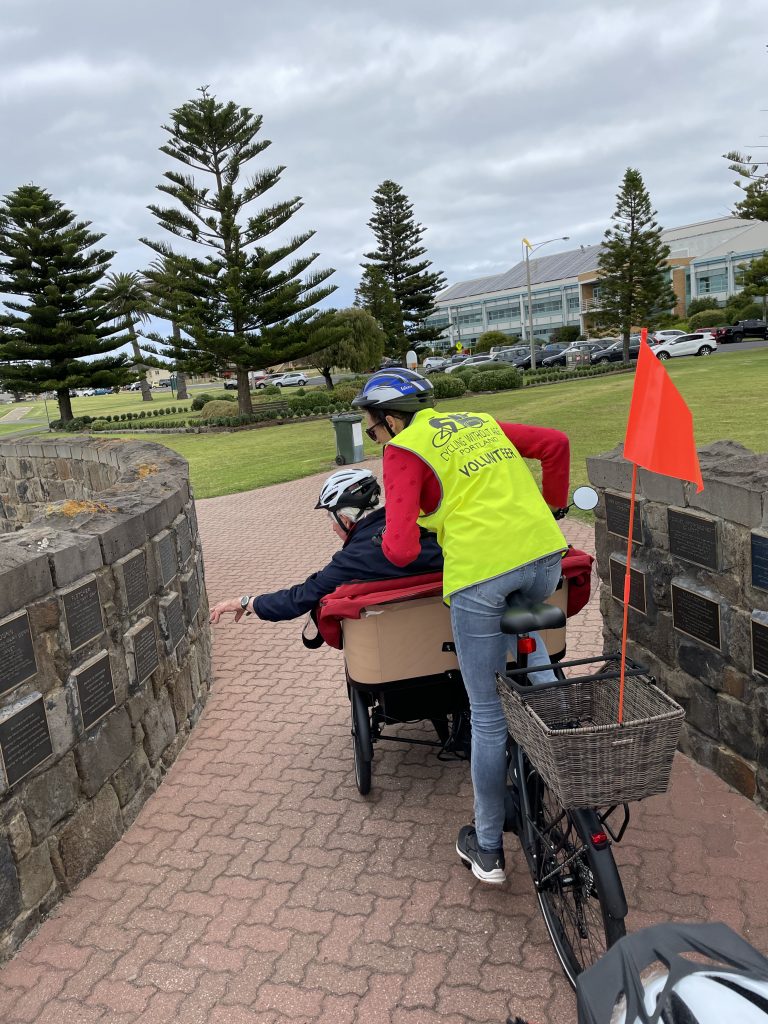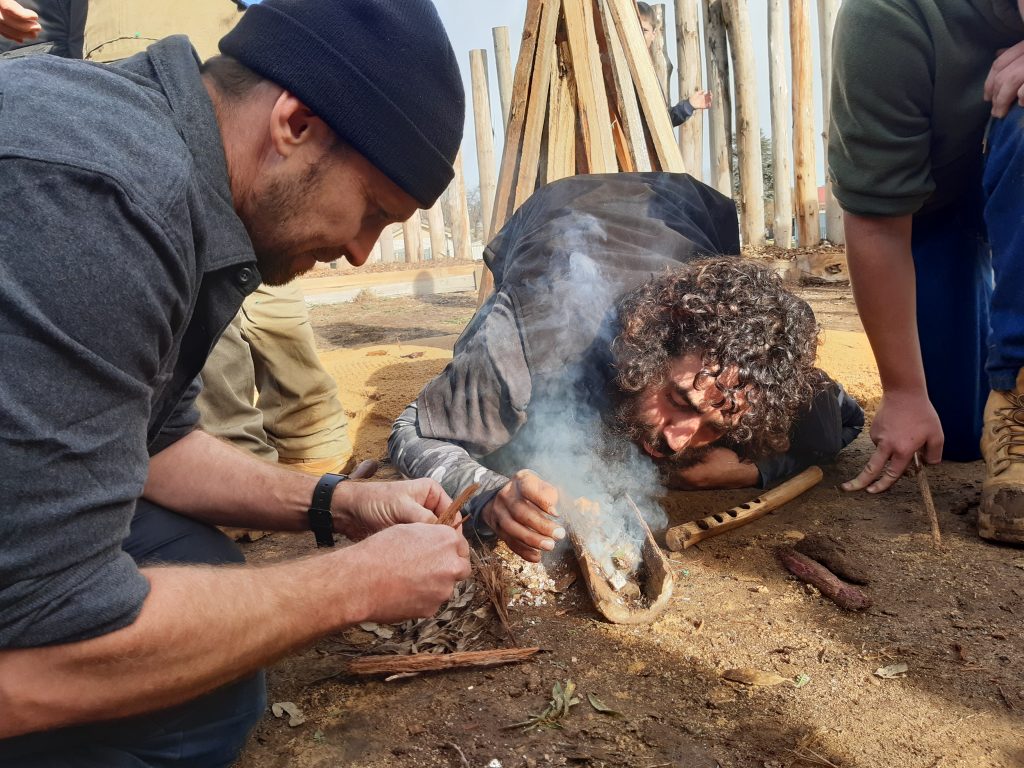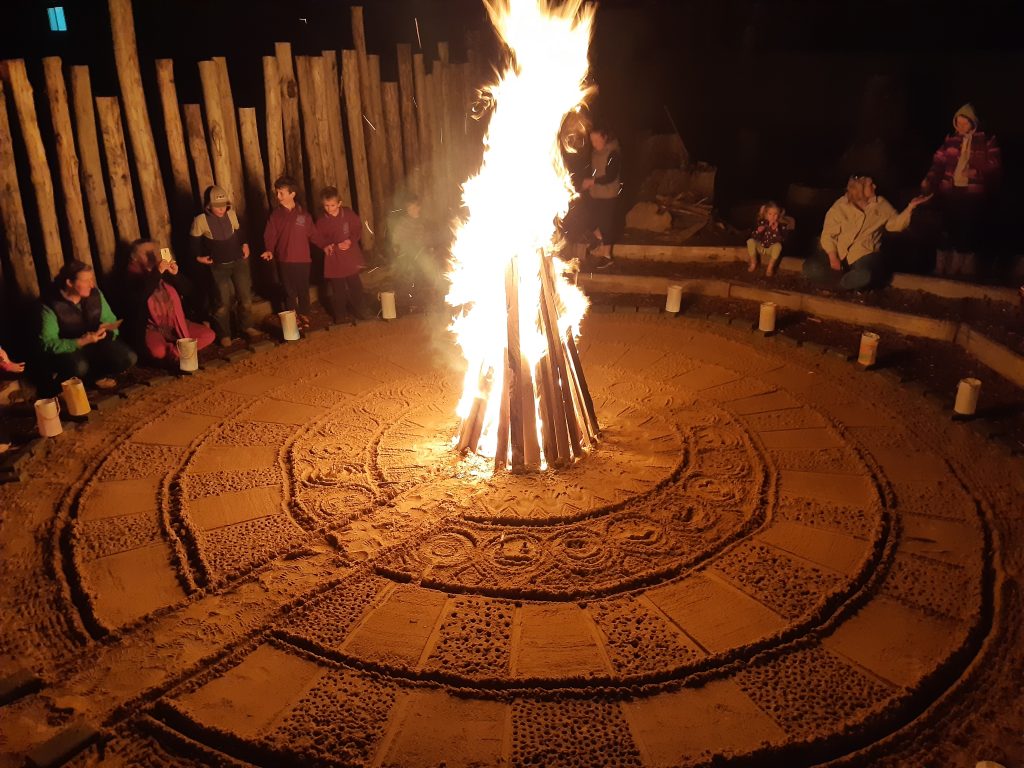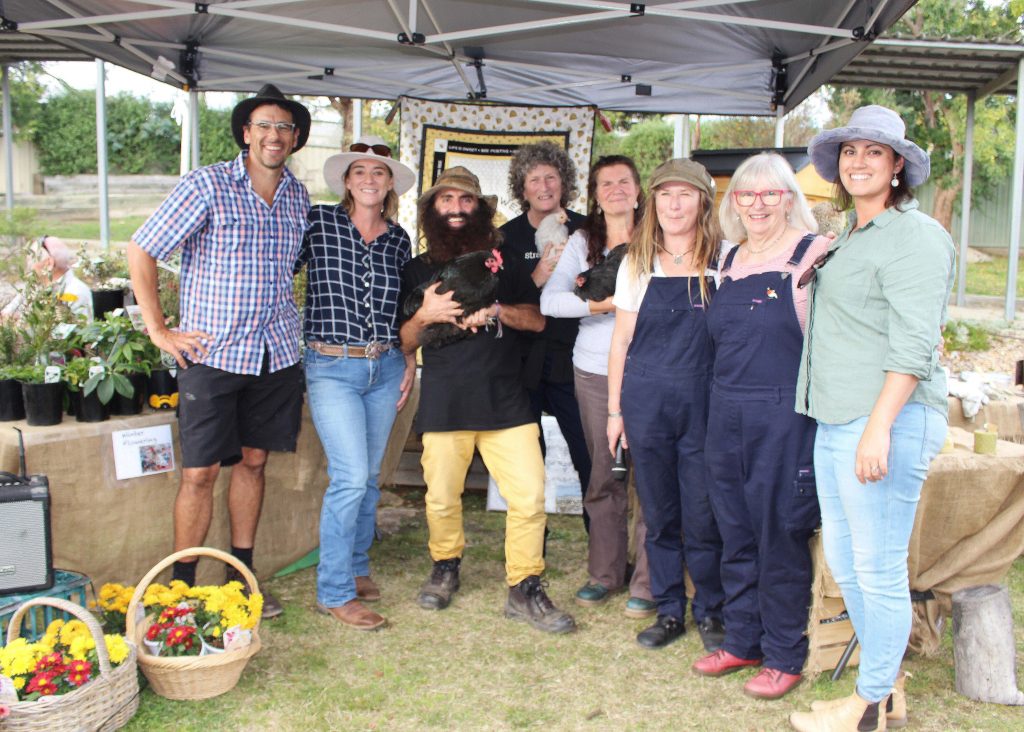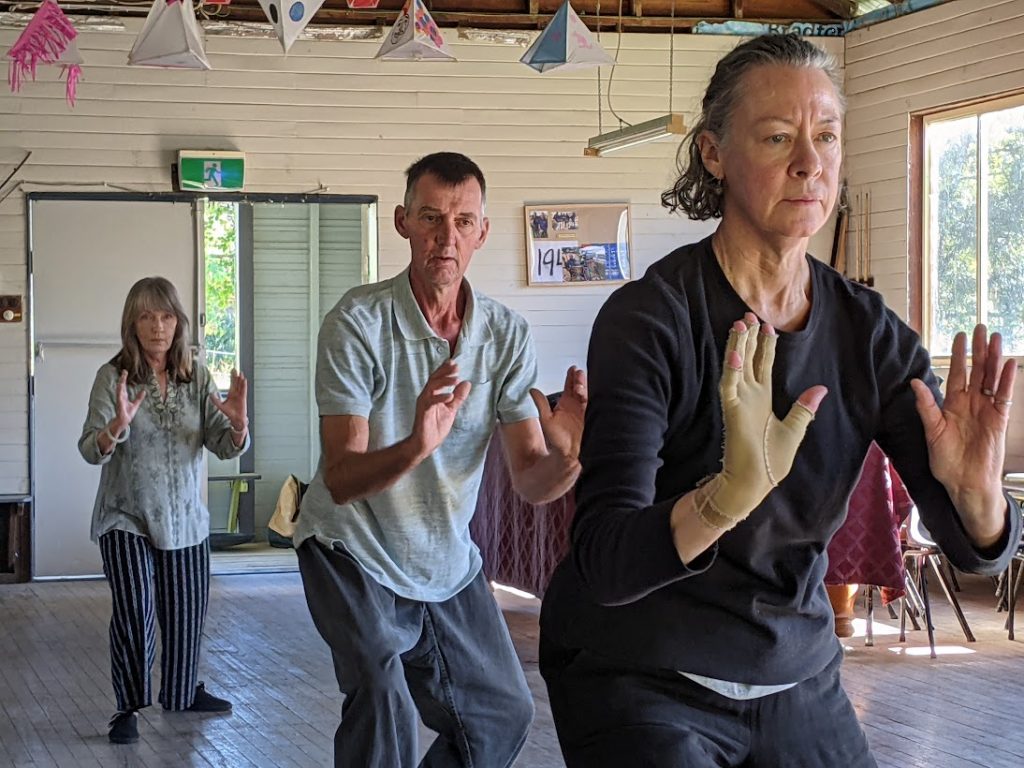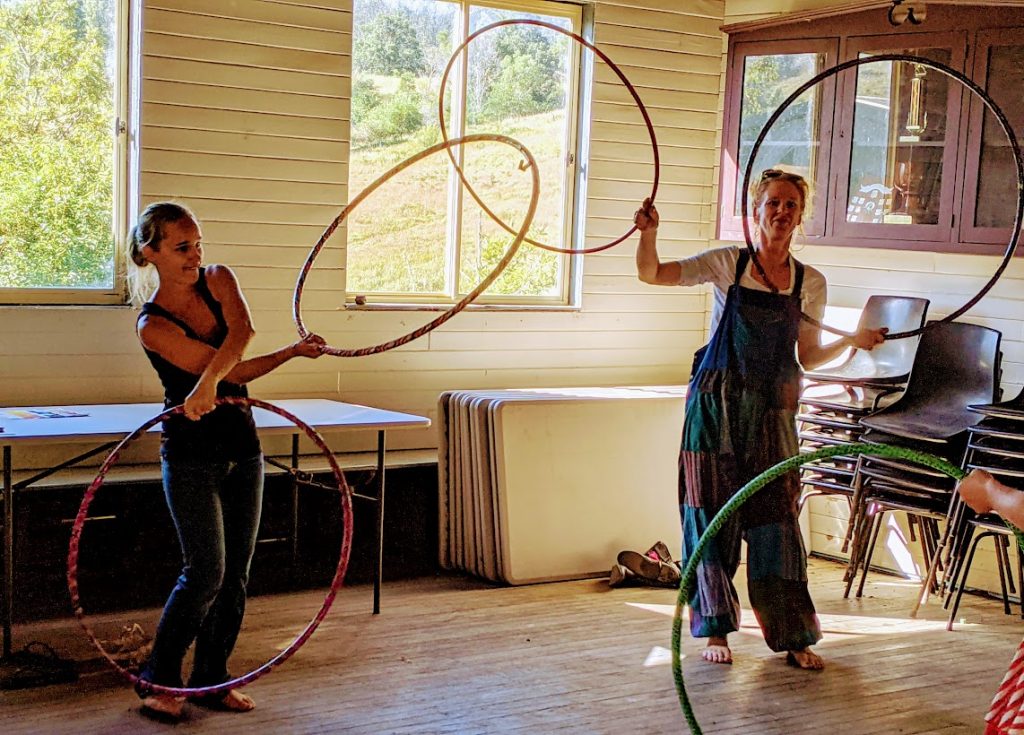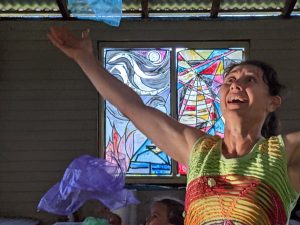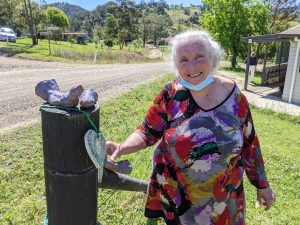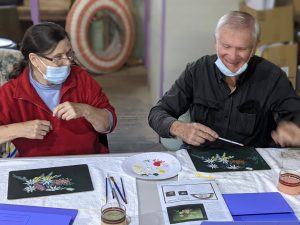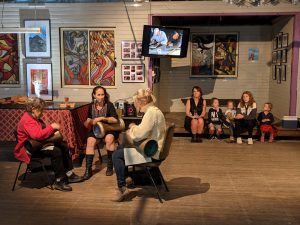Foundation for Rural & Regional Renewal (FRRR)
The Furneaux Historical Research Association is located in Whitemark on Flinders Island in Tasmania. Founded in 1964, they’re a volunteer organisation responsible for the Furneaux Museum and the conservation of artefacts pertaining to the natural and cultural heritage of the Furneaux region.
The museum plays a significant role in the vitality of the small and remote isolated community, attracting more than 2,000 visitors each year. It’s also a popular gathering place for the community for exhibition openings and special events.
Thanks to the help of an FRRR grant of $24,924, funded by a private donor, through the Strengthening Rural Communities program, the Furneaux Historical Research Association was able to complete the second stage of the Furneaux GeoTrail project.
The Furneaux Group consists of more than 50 islands in Bass Strait, just north of Tasmania. Their rugged and picturesque landscapes contain impressive geological features developed more than 600 million years ago. Many visitors and locals marvel at the vistas in the remote region but before the GeoTrail project, very few people were aware of just how special the geology is.
The GeoTrail project is all about linking the people who live in and visit the Furneaux region to the landscape, educating them and providing them with information in an easy and accessible way.
Stage one of the project was rolled out in 2019 and consists of a self-drive experience made up of 10 interpretive signs in areas of geological significance, easily reached by road. The innovative trail includes a mobile app and is the only one of its kind in Australia.
Stage two of the project saw the extension of the GeoTrail out into areas of geological significance accessible by walking, biking, 4WD, sailing or kayaking. These more remote areas contain examples of unusual and striking rock formations, telling the story of how the islands originated and evolved.
The completed Furneaux GeoTrail offers a world class user experience across the island group that attracts new people to the area, engages those who use it directly, and allows local community and business entrepreneurs to use their creative energies and leverage the GeoTrail to seek out future opportunities.
“We are very proud of the fact that the GeoTrail is bringing our local community and those who visit Flinders Island closer to the geology and the environment around them. It’s so rewarding to hear people talking about rocks! We are also very proud of the huge amount of work done by our volunteers in completing the project.”
Dr Dale Williams, Project Manager
For more inspiring stories like this, head to our FY 2021/22 Annual Review.
Access to reliable, high quality mobile phone coverage is important for everyday activities. But it is critical when it comes to the lifesaving activities that the Freycinet Volunteer Marine Rescue Association undertake on a regular basis.
Based in Swansea on Tasmania’s east coast, the Association’s base is located on low lying Council land, which impacts the mobile phone signal from the local Telstra tower as it requires a direct line of sight for best coverage. The building is steel framed and clad, further blocking the already weak mobile signal. This meant members had to go outside of the building to obtain a mobile signal, which at best was two bars. Going outside to check the Bureau of Meteorology website prior to launching a rescue vessel involved waiting several minutes to access a signal and the important weather data.
COVID exacerbated the need for a mobile booster to provide stronger and more reliable mobile coverage as member training, which the Australia Maritime Safety Authority requires to be to the same standard as commercial mariners, had to move to Zoom sessions. Zoom provided additional benefits by allowing members the opportunity to remain connected and still have timely input into the Association’s activities.
Another challenge was that family members could not contact volunteers if they were inside the building. If there was an incident or accident while working within the building, there was also no way to make an emergency call without going outside – potentially leaving an injured member unattended.
A $2,244 grant from FRRR’s Strengthening Rural Communities program, funded by a private donor, supported the installation of the mobile booster. The project, described by the Association as ”one of our best projects in over 20 years of operation”, resolved all the issues of being able to access reliable, high quality mobile coverage in the Association’s building.
Results after installation showed 100% signal strength inside the building, providing a safety net for volunteers working on site and enhancing community safety, as information on emergency situations can now be accessed without delay.
For more inspiring stories like this, head to our FY 2021/22 Annual Review.
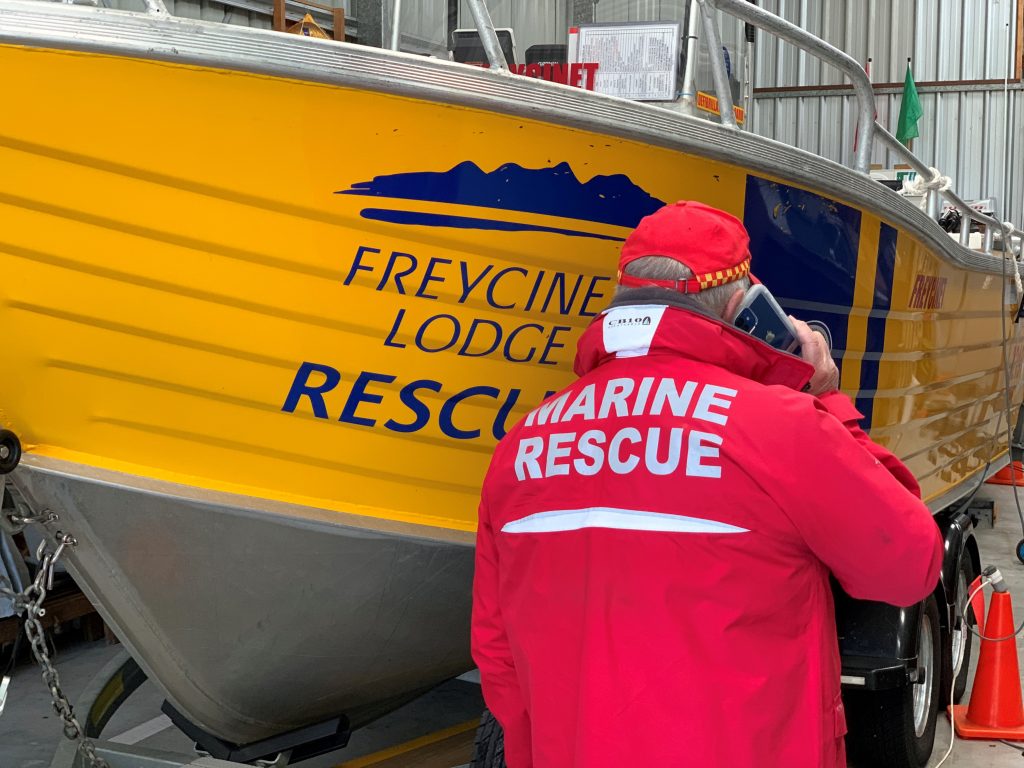
Malak Malak People
Nauiyu is an Aboriginal community of 444 people in the Daly River region in the Northern Territory. Their place, around 2.5 hours drive from Darwin, is said to be one of the best Barramundi fishing spots in the country, and locals hold a strong connection to their land and culture. Despite the idyllic description, Nauiyu experiences alcohol and other drug misuse within its small population. Yet there is strong community support for real solutions that respond to community needs, are culturally appropriate and involve building local capacity and furthering local leadership.
Enter Red Dust. Founded by John Van Groningen, the organisation was born out of his work with youth in the Aboriginal community of Lajamanu in 1984. Today, it delivers innovative health promotion and community development programs that are co-designed through trusted relationships with remote First Nations communities. For the people of Nauiyu, a community-based diversion program celebrating cultural identity and pride would provide a means to connect and engage the vulnerable community.
Consulting the community, Red Dust’s Local Drug Action team coordinated the Red Dust Community Art Collaboration project with local organisations. Green River Aboriginal Corporation identified sites for the murals; Merrepen Arts provided the connection to local artists and culturally relevant iconography; and Ironbark provided access to volunteers and project participants. Proper Creative, based in Darwin, was commissioned to paint the murals in conjunction with local project participants.
With collaboration between local artists, community members, young people, and service providers, and a $5,000 Strengthening Rural Communities grant funded by the Tim Fairfax Family Foundation & Pinnacle Charitable Foundation, Red Dust will deliver three large murals. The project will not only create beautiful public spaces and bring the dreaming of the Nauiyu community to life, it will also support the health, wellbeing and future opportunities for local youth.
While the mural project is ongoing, you can see the impressive first piece, featuring Daly River artist Kieren Karritpul. https://www.reddust.org.au/blog-posts/ldat-2022-05-nauiyu
For more inspiring stories like this, head to our FY 2021/22 Annual Review.
Yarralin Country
Can you imagine not being able to access a washing machine regularly? Sadly, that’s the reality for many people living in remote First Nation’s communities. Seven out of ten Aboriginal children living in these remote communities will contract scabies before their first birthday. Community homes are overcrowded, 59% do not have washing machines and only 38% of people living in communities wash their clothing and bed linen. This is largely because of a lack of access to power and a regular supply of detergent.
In addition to the health benefits, ready access to clean clothes removes barriers to job and school attendance, encourages community social inclusion and provides an enhanced sense of self pride and purpose.
The North Australian Aboriginal Charitable Trust (NAACT) is the charitable arm of Aboriginal Investment Group (AIG), a registered charity and a genuine not-for-profit entity. NAACT is dedicated to the improvement and regeneration of remote Aboriginal communities and the creation of sustainable employment opportunities for Aboriginal people.
NAACT’s goal is to provide every Aboriginal person the opportunity to have clean clothes and a disease-free home.
That’s where the Remote Laundries Project comes in. It delivers fully automated, custom-built, commercial standard, fit-for-purpose laundries in remote Northern Territory Aboriginal community locations. The washing and drying cycles are provided at no cost, with detergent and chemical grade sanitiser automatically injected into the wash-cycle. Each laundry program site generates five sustainable meaningful positions, is 100% locally staffed and operates 38 hours per week across six days. The laundries allow every sector of the community to access clothes and bedding washing facilities, which increases quality of life by breaking community cycles of disease and sickness common in remote Aboriginal communities. This delivers clear tangible health, social and economic benefits.
It’s an innovative business model – a social enterprise – driven by Aboriginal people. Robust community consultation gives voice to those who will benefit from the project including Traditional Owners. AIG works in conjunction with the relevant on-site Aboriginal Corporation and is directed by this collaboration with Traditional Owners for all significant decisions about development and delivery.
While the majority of this project, valued at $742,000, comes from the Aboriginals Benefit Account, NAACT originally approached FRRR for a grant of $10,000 to go toward the cost of the machines. However, COVID delayed the whole project, including the release of other funding. The project managers and community representatives were keen to ensure that the machines were ready to go when restrictions lifted and other funding was released. The grant was funded, thanks to the support of the Tim Fairfax Family Foundation, through the Strengthening Rural Communities program. NAACT applied for a variation of the original grant agreement, which allowed them to use the grant as a deposit to purchase the washing machine in advance of the Yarralin Remote Laundries Project’s commencement.
In their grant acquittal, Brittany Ciupka, Project Officer, said that FRRR was exceptional, quick to respond and flexible.
“We greatly appreciate FRRR allowing us to secure the machines while we finalised ABA negotiations. This will save large amounts of lead time as the machines ship from the USA. We are excited to forge ahead as soon as ABA gives us the green light and we will keep FRRR in the loop with project updates.”
While the laundry in Yarralin is not yet operational, there are four similar laundries already operating successfully in other remote communities, so FRRR looks forward to continuing to monitor the impact of this this innovative project. It should not only reduce disease but create jobs and income, leading Indigenous people to self-reliance. This in turn will lead to a more engaged, participating community and a stronger sense of place.
For more inspiring stories like this, head to our FY 2021/22 Annual Review.
On Arrernte Country
You’ve heard of the connecting and positive power of dance, right? Well, GUTS Dance Central Australia knows all about it – and knows it works. They saw an opportunity to use dance as a way to celebrate local diverse cultures in Alice Springs and, as the only contemporary dance organisation within a 1,500 km radius, this was squarely in their domain!
‘Alice’ as it’s known colloquially, is home to 25,000 residents, however there are no other towns or cities closer than 400 km away. Social cohesion can be difficult here, with divisions in the community “primarily based on race and historical disadvantage fuelled by a lack of understanding and exchange”. GUTS believed that they could address this and break down negative misconceptions through better visibility of minority populations through the art of dance.
“We see dance as a universal language that crosses cultural boundaries. People who are part of these dance groups are often newly arrived to Australia and they find cultural connection within the dance groups, or are First Nations Australian’s on whose land we live, and whose culture needs to be seen, respected and learned about.”
For much of the year in Alice, it’s too hot to have outdoor activities during the day, and there was only one significant event – Harmony Day – that brought together cultures in Alice.
They thought it was about time for another offering and started planning. As part of SPRING.LOADED.DANCE, GUTS’ inaugural contemporary dance festival, they would deliver a Community Dance Day (CDD), during which social and cultural dance groups could showcase their dancing, and audiences could join in!
Using a $9,800 Strengthening Rural Communities grant funded by FRRR, the festival team identified local groups to be involved, liaised with participants, undertook the planning for setup and packdown of the site and marketed the event. The CDD event took place on the Council Chamber Lawns in the CBD of Mparntwe/Alice Springs. It included Tinkerbee Arrernte Dancers, who got to showcase their incredibly important dances and gain experience in performing for audiences. The GUTS 50+ dance group ‘Chance to Dance’ had their first public performance – ”a wonderful stepping stone for building their confidence to perhaps continue to work towards more small performances in the future.“ There were Balinese and Nepalese dancers, kids dance offerings, Afo Afro Dance Group and Alice Swing.
The GUTS Brave Bodies group also performed a short piece by emerging Arrernte / Yankunytjatjara dance maker Toni Lord, created out of her grandmother’s stories. Most of the young women in the group have First Nations heritage, however for many this was their first time performing a contemporary Aboriginal dance piece.
Each dance group was paid for their time, showing that the organisers truly understand the value of each distinct offering and practice.
With performances from 50 dancers, and attendance by 230 community members over 2.5 hours, GUTS is confident that a broad cross section of the community was able to watch and participate, and benefit from exposure to the wonderful world of cultural dance.
Co-artistic Director, Madeleine Krenek, said they will endeavour to run CDD every year, regardless of whether the SPRING.LOADED.DANCE event continues.
“While there were many different offerings throughout the broader festival, CDD was perhaps the most celebratory, inclusive and fun event we put together.
“There was a wonderful amount of participation from the audience and the general energy was proud and supportive.
“Through GUTS’ work with young people in the community, we know that when dance is employed as a vehicle for empowerment and engagement, it is celebrated by a diverse and numerous portion of our population.
“Often, we find that people have never been exposed to dance before and once they are, it speaks to them in a way they were unaware it could. It is a form that defies the conventions and barriers of language and speaks to our commonality as humans through the bodies each of us possess. In this way, it is a tool with which we can understand one another and build relationships across many boundaries.“
Madeleine Krenek, Co-Artistic Director
For more inspiring stories like this, head to our FY 2021/22 Annual Review.
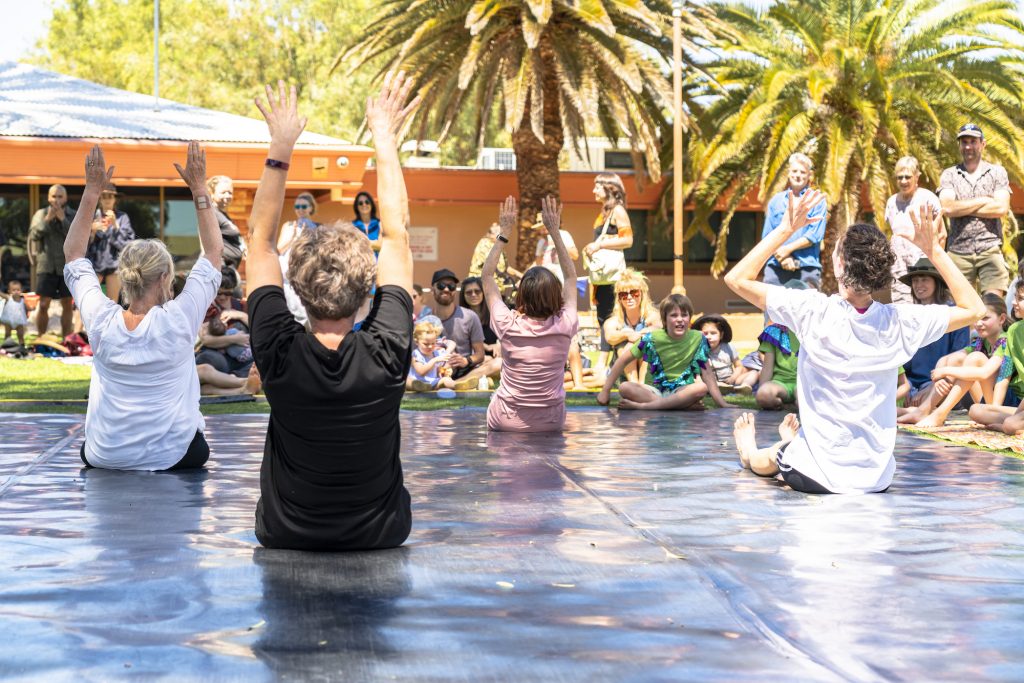
On Gunditjmara Country
On the southwest coast of Victoria, the city of Portland and surrounding areas now have access to a fantastic service called Cycling Without Age.
Cycling Without Age (CWA) is a volunteer organisation that involves taking elderly and less-abled citizens out for free bike rides on a specialised bicycle called a trishaw. The project originally started in Denmark and after major success there are now 1600 chapters across the globe, including Portland.
CWA Portland has only been in the community since 2020, but in their short time they have secured funding to purchase bikes and also partnered with the local Rotary Club. Portland’s local Rotary Club has been in the community for 70 years and know the residents well. This partnership was a perfect way to get the project off the ground.
With support from the Rotary Club, CWA Portland applied for a Strengthening Rural Communities (SRC) grant to purchase a custom-built trailer that will allow them to transport two bikes to other communities across the Glenelg Shire.
After being awarded a $9,000 grant, supported by the Ian Rollo Currie Estate Foundation, CWA Portland was able to purchase the trailer and has been able to regularly pick up passengers from Harbourside Lodge Aged Care facility. They have plans to engage with the Casterton and Nelson communities.
The interaction that CWA Portland has had with Harbourside completely exceeded their expectations, with the facility embracing weekly rides that see new passengers joining in each time.
This program has been extremely beneficial for passengers. For elderly people and those living with a disability, loneliness and social isolation can be a big issue, particularly in remote, rural or regional communities. The CWA bikes give these people the opportunity to ‘feel the wind in their hair’ and a chance to visit some of their favourite places in their community. CWA provides a safe and enjoyable way for community members to socialise, tell their stories and be a part of the community once again.
For example, regular rider Brian, who suffers from memory loss, enjoys seeing all the local dogs when he’s out with CWA. Brian used to be a part of the local Vintage Car Club, and he sometimes gets to visit their museum. One day he saw an orange Charger in the museum that used to belong to his son, which made him very excited when he was able to remember it.
For more inspiring stories like this, head to our FY 2021/22 Annual Review.
In response to the recent impact of drought, bushfire and COVID, Bombala Preschool in NSW wanted to increase resilience and strengthen intergenerational connections. They decided to work collaboratively to codesign and construct a community garden space, at the same time as enhancing permaculture skills.
Their idea was to collaborate with the local high school, Public School, St Joseph’s Catholic School and 11 associated organisations to create and maintain a community-based urban and Indigenous agriculture project and recovery program on land adjoining the preschool.
The aim was to create and integrate a nature-based play space and permaculture garden for the preschool with an inclusive intergenerational program, involving seniors, staff, parents, teenagers and the preschoolers in growing and sharing food, as well as showcasing sustainable practices. Blended into this, they were hoping to include culture, arts, bushfoods, a fire ceremony and a language program to celebrate the region’s Indigenous heritage.
The concept was to have the whole project overseen and aligned to a mental health plan to assist the region in its recovery from drought, bushfires and COVID. The link between improved mental health, increased community connectedness and resilience through community gardens is well documented.
Thanks to support from FRRR through a $15,000 SRC grant, funded by Jeunesse Kids Foundation, plus funding from other donors, it started out strongly. Despite COVID, Project Manager Dan Bakker and Cultural Advisor Nathan Lygon, were appointed in Winter 2020, with preliminary site works completed by May 2021.
Community involvement ebbed and flowed. While a DIY lasagna-garden (a no-dig, no-till organic gardening method) workshop, thermal composting demonstration and formal project tour were convened in late 2020, they were poorly attended due to the escalation of the pandemic anxiety at the time, but there was still strong support to keep the project moving forward. The involvement of students and staff from Bombala High School and St Joseph’s Catholic Primary School led to both schools committing significant efforts. All year groups of St Joey’s eagerly and actively attend the fortnightly double-day sessions, with the high school having established a core group of over 15 students, each of whom now have assumed operations roles in the patch.
Students, staff and volunteers (often hand-in-hand with preschoolers) diligently worked together on activities including:
- Extensive excavation, shaping and lasagna-garden building of soils;
- Haulage of all hardwood materials, aggregates, fertilisers and construction materials;
- Significant terrace, path and congregation areas preparation;
- The creation of more than 75 square metres of seasonal garden bed;
- The trench digging and placement of a 200 bush-pole perimeter fence;
- Reconstruction of a pre-existing garden shed;
- Building an outdoor multi-purpose work-bench / kitchen;
- Commenced construction of cultural fire circle;
- Full replacement of the adjoining fence line with KidSafe approved permeable pool fencing;
- Arterial irrigation system installation;
- Initial laying of 45 metres of arterial path paving;
- The construction of a walk-in chicken coop and 25 square metre chicken run; and
- Peri-secure sheep fencing of one acre block opposite.
Daniel Bakker, Project / Events Manager from Bombala Preschool reported that some 18 months into the venture (and in the face on unprecedented challenges), the project’s initiation has been viewed a considerable success with construction activities, social / cultural events, seasonal planting and systems-integration unfolding ahead of schedule and beyond the standard expected in the drafting of the project.
“Preschool staff and students have established a deep and caring connection with the garden. Almost all planting and harvesting has involved children. St Joey’s ‘big-buddies’ students have bonded with many of the preschoolers, giving agency for respective students to assume mentor roles. Likewise, high schoolers (mostly male) have exhibited caring capacities rarely seen by their teachers,” he explained.
Several key inclusive events have been convened, doing much to extend and lift the social profile of the facility. River Cottage Aust Chef and ABC South East presenter, Paul West, worked with students to make a meal using produce from the patch and contributed to a Solstice Fire Mandala with students and preschoolers, before co-initiating the ceremonial Indigenous fire with Nathan Lygon. The first spark was tindered using traditional Indigenous fire making techniques graciously shared by Nathan. Lanterns prepared by the preschool outlined the fire mandala, which was attended by 65 family members.
In preparation for this event, a cultural name was chosen for the project – Ngulla, meaning ‘plant-based food’ in the language of the Ngarigo region. This name was offered by an Elder of the Country and secured by the Cultural Advisor, Nathan, through culturally sanctioned channels.
Shortly thereafter, they hosted ABC Gardening Australia’s Costa Georgiadis for a day of site tours, recovery and sustainability themed workshops and a panel discussion. The discussion was MC’d by local journalist, Sophie Longden, with both Costa and local identities providing input on the topic of social resilience, regenerative agriculture and environmental recovery. More than 100 locals attended the event, something unprecedented in the history of the preschool.
While COVID hampered the project significantly and in multiple ways, the project has been a great success and the groundwork is laid for ongoing projects and partnerships. With lock-up and full systems integration approaching, the facility is looking well-placed for staff to safely allow children to freely explore and integrate with the playscape, giving the project increased formal and informal education capacity.
For more inspiring stories like this, head to our FY 2021/22 Annual Review.
The small, rural town of Mooral Creek is around 260 kms north of Sydney. Following the devastation of the 2019/20 bushfires, the Mooral Creek Hall & Progress Association Committee embarked upon a project to bring the whole community together to connect, reflect and support each other through the bushfire recovery process.
With the help of a $25,000 Strengthening Rural Communities grant, supported by the Fire Fight Australia Fund, came Creative Spark – an arts project aimed at encouraging creative expression and developing confidence and skills in a range of artistic forms. Through a series of visual and performance arts workshops in 2021, the project brought together the people of Mooral Creek and neighbouring communities. The project culminated in an uplifting Showcase event that celebrated the community’s achievements.
Project organisers coordinated the delivery of 14 different workshop series over 55 sessions, all while negotiating the difficulties of local flooding and COVID restrictions. More than 75 community members participated in at least one workshop.
Participants benefited from the skill, enthusiasm and encouragement of 11 local facilitators who aimed to shift focus from loss and trauma to positivity and inspiration. The facilitators themselves benefited from being able to share their knowledge, expertise and creative skills, while strengthening their community relationships. Sadly, the Fire Chief passed away during the project, however his wife found solace in delivering her painting workshop, and old and new friends were able to journey with her through grief and creativity.
Some of the resulting artworks from the many workshops directly reflected the subject of the bushfires and gave the town many beautiful keepsakes. In one workshop, participants painted the windows of Mooral Creek Hall with a stained-glass effect. They depicted their homes surrounded by colours, lines and shapes that evoked fire, smoke, landscape and nature. The overall effect for the Hall was transformative – creating a vibrancy and cathedral-like space, which can now be appreciated from both inside and outside the hall. The result of another workshop was a painting on a nearby utility pole – a simple memorial of the Black Summer Bushfires, in recognition of the work of the RFS and particularly, their Fire Chief. It depicts a koala, a goanna and a crimson rosella, some of the local fauna that suffered from the impact of the fires.
Other workshops had a stronger focus on coming together to learn physical skills, with a focus on mental wellbeing, such as ‘The Magic Circus’, Tai Chi and drumming workshops. The Middle Eastern Dance workshop saw women of all ages develop skills and collaborate over many weeks to choreograph a belly-dancing performance. The performance, titled Out of the Ashes, was described by many at the Showcase event as the best thing they had ever seen at the hall.
As well as exhibiting the artworks created during the workshops, the Showcase also displayed photographs taken during and immediately after the fires. This proved very thought-provoking, with many locals using them as a talking point to share their experiences of the bushfires. Also on display were several portraits commissioned from a local artist, which recognised community members who experienced significant loss from the bushfires, and were gifted to the sitters following the event.
The benefits of the Creative Spark project were far-reaching and effectively assisted the community to work through the trauma and experiences of living through the bushfires. Many residents were able to be involved in different ways – whether as a workshop facilitator or participant, having their portrait done, or as an audience member at the Showcase event. The breadth of arts activities and incredible scope of the project created a vibrant energy in the community and residents were amazed at what they were able to achieve. Several activities have continued throughout 2022 – evidence of the ongoing benefits of the project.
For more inspiring stories like this, head to our FY 2021/22 Annual Review.
On Jukembal, Kamilaroi and Bundjalung Country
The TenterLIFE Suicide Prevention Network was formed in 2019 in the northern NSW rural community of Tenterfield. By bringing members of the community together to talk and learn about suicide prevention, the organisation hopes to reduce the number of suicide and suicide attempts in the area.
Tenterfield has been through many traumas over the past few years. Drought, fires and more recently COVID have taken their toll on the community. The effects of the 2019/2020 Black Summer bushfires are still being felt by the community, with the landscape still blackened. This affects people’s mental health.
Tragically, there were 154 suspected or confirmed suicide deaths reported in NSW from 1 January to 28 February 2021. This is similar to the number of deaths reported within the same time period in 2019 and 2020, so this is an ongoing issue that needs dedicated focus.
Chairperson of TenterLIFE, Lexie Sherren, explained that the numbers for the Inverell / Tenterfield area are among the highest in the state.
“By informing communities of the drastic need to be more aware of the situation, hopefully these numbers can reduce,” she explained in their application.
The compelling case, plus the support of a range of local stakeholders, including health, allied health, education and charity sectors, plus community members with first-hand experience of mental health and suicide impacts, coupled with their track record, saw TenterLIFE awarded a $25,000 Strengthening Rural Communities (SRC) grant, thanks to the support of a private donor. The funds went toward printing flyers, purchasing t-shirts and windcheaters to be worn on their public walks and running Suicide Prevention First Aid training. Having spent less money on the shirts and jackets, FRRR approved a variation that meant they also purchased a PA system to use at events, rather than borrowing from one of the members.
The group has held regular ‘Walk ’n’ Talk’ events, marked White Wreath Day where they remembered those lost to suicide, as well as participated in Stress Down Day, where there was a talk on stress management and then the group sang and blew bubbles.
“All the comments were positive and I don’t think I’ve seen everyone attending smile and laugh so much. We played People Bingo, had an A-Z Scavenger Hunt and played lots of games.
“These events instil a sense of belonging for community members. Knowing someone cares can provide relief for a person who may be suicidal. Giving voice to their thoughts and expressing their feelings aloud, knowing someone is there to listen, can be truly lifesaving. Isolation or feeling alone can also increase suicidal tendencies, while connection with another person can have the reverse affect,” Ms Sherren said.
The group has more activities planned throughout the year.
For more inspiring stories like this, head to our FY 2021/22 Annual Review.
As thousands of Australians continue to be impacted by floods in Victoria and Tasmania, FRRR is seeking donations to meet the recovery needs of the remote, rural and regional communities that will need help and support in the coming months and years.
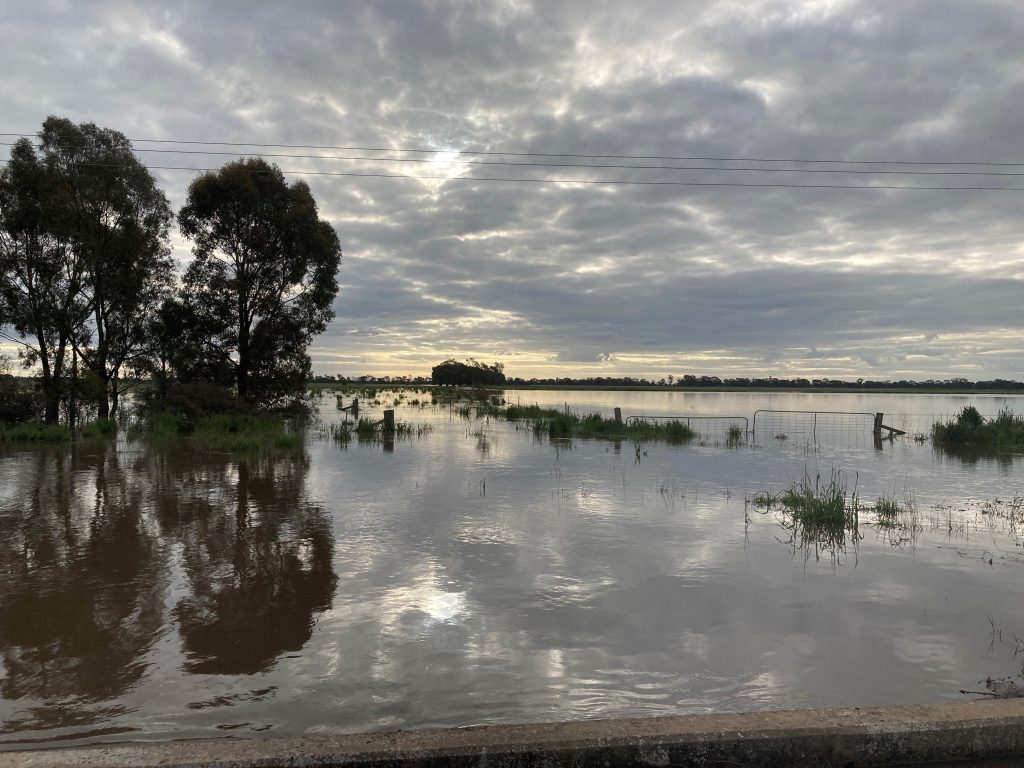
Natalie Egleton, CEO of FRRR, said that the Foundation has already seen local people and organisations once again step up and come together to support one another in the lead up and, as waters start to recede in some places, with the long road to recovery that they have ahead of them.
“The people and places in flood affected regions throughout Victoria, New South Wales and Tasmania will continue to feel the impacts of what’s unfolding for months and years to come. We really can’t stress enough just how big the long term social and economic consequences can be as a result of these kinds of natural disasters.
“Many of these regions, particularly those in Central Victoria, have been through this kind of disaster before, making the current floods all the more traumatic. Many members of the FRRR team themselves have spent the last few days evacuating, helping loved ones to evacuate or have been out sandbagging in their local communities.
“In the last 20 plus years, FRRR has built strong networks and relationships with the people and the community organisations that are being impacted right now and, as always, we’ll be waiting and ready to support them throughout the medium to long term recovery process. Donations to our flood appeal will help to rebuild infrastructure in these areas, address the physical and mental health challenges that occur as a result of this disaster, build the capacity of community groups and strengthen community-led recovery efforts,” Ms Egleton explained.
People can support FRRR’s Flood Recovery Appeal by donating to the Disaster Resilience and Recovery Fund, the Central Victorian Fund or the Strengthening Rural Communities: Prepare & Recover program.
Donations to the Disaster Resilience and Recovery Fund are pooled and invested to ensure that remote, rural and regional communities affected by natural disasters can access flexible, fit-for-purpose funding to support local preparedness and recovery efforts, when it’s needed. For those specifically wanting to support Central Victoria, FRRR also offers the Central Victoria Fund, which continues the legacy of the Central Victoria Community Foundation and focuses solely on that region.
Alternatively, donations can be made to FRRR’s Strengthening Rural Communities: Prepare and Recover program, with FRRR offering one-off, flexible grants through this program to support community organisations in these flood-impacted regions.
FRRR has supported remote, rural and regional communities across the country prepare for and recover from natural disasters since 2006. To date, FRRR has distributed around $46 million for community-led disaster recovery and resilience initiatives.
If you’d like to provide immediate assistance, below is a list of some local organisations that are helping to coordinate support in affected areas:
- Tomorrow Today Foundation – Benalla
- Border Trust – Albury Wodonga Region Community Foundation
- Greater Shepparton Foundation
- Into Our Hands – North East Victoria
- Shepparton FoodShare
- Home – Bendigo Foodshare
- Neighbourhood Houses
- GIVIT
- Rural Aid
- Spontaneous Volunteering – Maribyrnong, Seymour, Rochester, Shepperton and Echuca
Finally, if you would like to volunteer, BlazeAid is currently in the process of recruiting and assembling crews of volunteers.

